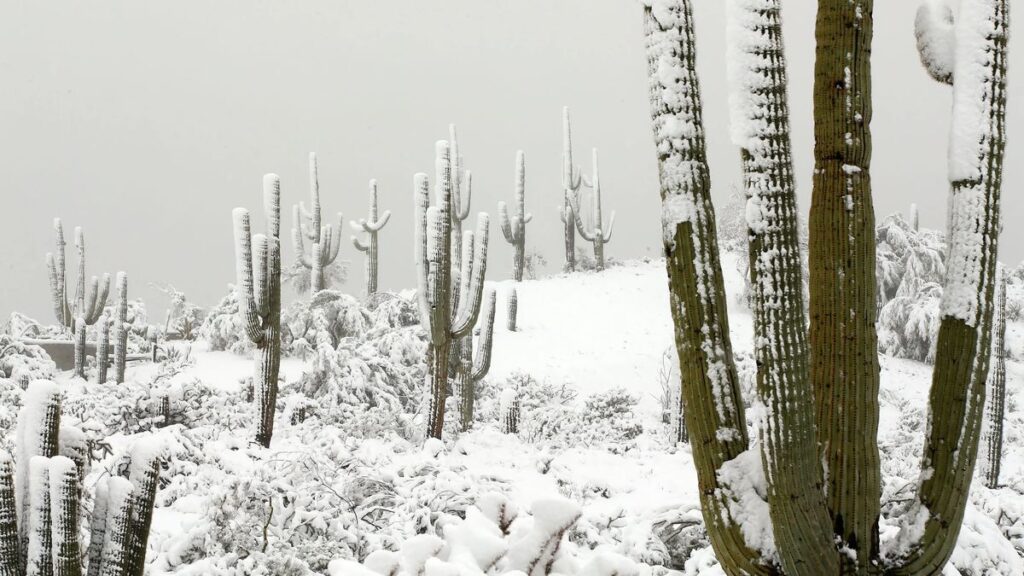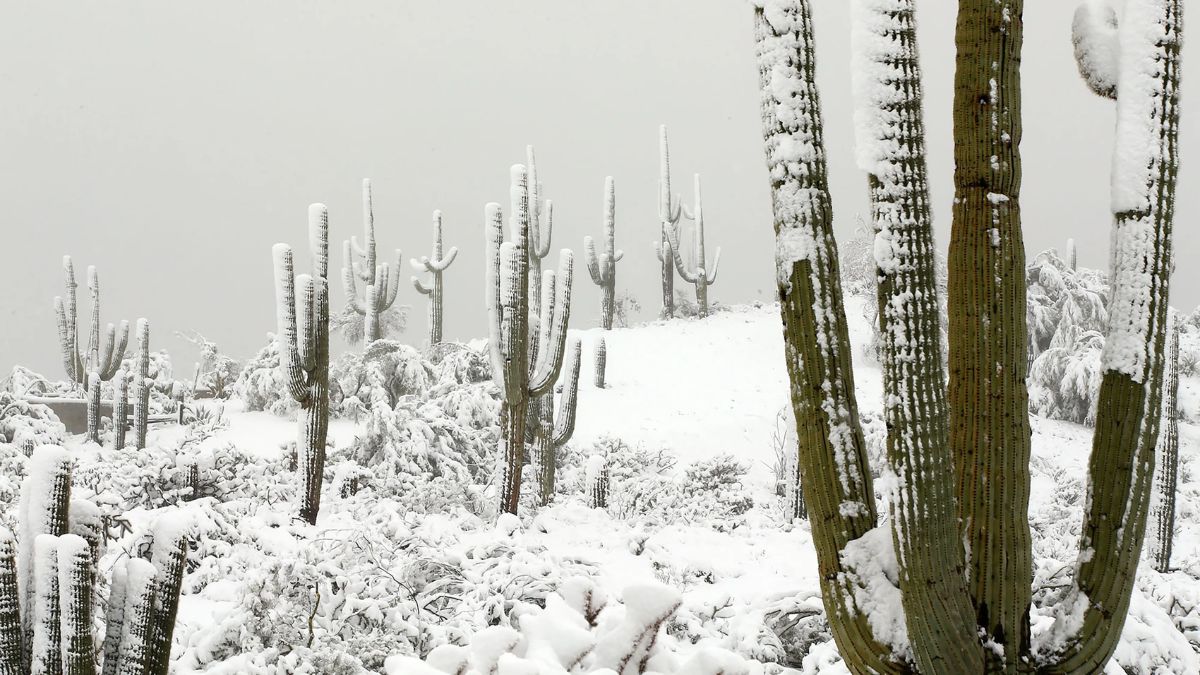No, it does not typically snow in Phoenix. Phoenix has a desert climate with hot summers and mild winters. While the city experiences a pleasant winter season with cooler temperatures, snowfall is rare. On average, Phoenix sees measurable snowfall once in several decades.
The city’s desert location and warm climate make it highly unlikely for snow to occur. However there have been a few notable instances of snowfall in Phoenix’s history, but they are infrequent and met with excitement from residents and visitors.
Phoenix, Arizona, is known for its scorching desert climate and abundant sunshine, with temperatures regularly soaring above 100 degrees Fahrenheit during summer. The city’s dry and hot weather is a major draw for many residents and tourists seeking a warm escape.

However, the question arises: does it snow in Phoenix? In this article, we will explore the climate of Phoenix and whether or not snowfall is a rare occurrence in this desert city.
Location Overview
Phoenix is the capital and largest city of Arizona, located in Maricopa County. It is situated in the central part of the state, surrounded by mountain ranges such as the McDowell Mountains and the Superstition Mountains.
The city’s average elevation is around 1,086 feet above sea level. Major highways include Interstate 10 and Interstate 17. Phoenix is part of the Phoenix Metropolitan Area and is served by Phoenix Sky Harbor International Airport (PHX).
Geography and Climate of Phoenix
Phoenix is located in the Sonoran Desert, one of the hottest and driest deserts in North America. The city experiences long, extremely hot summers, with temperatures regularly exceeding 100 degrees Fahrenheit. Winters are mild and enjoyable, with average high temperatures ranging from the mid-60s to the low 70s Fahrenheit.
Phoenix receives minimal rainfall, with the majority of precipitation occurring during the monsoon season in late summer. The region’s geographical location contributes to its arid conditions, with the Sonoran Desert stretching across parts of Arizona, California, and Mexico.
The desert is known for its sparse vegetation, vast expanses of sand, and minimal precipitation. However, the Salt River, a major water source in the region, flows through the northern part of Phoenix, making the water supply adequate.
Historical Snowfall Record
Over the past century, Phoenix has witnessed a few instances of snowfall that left residents in awe. One such event occurred on January 20, 1933, when a snowstorm blanketed the city with approximately 0.4 inches of snow.
Another memorable snowfall took place on December 6, 1998, when Phoenix saw about 1 inch of snow. These rare snowfall events are often met with excitement and delight as they offer a temporary break from the city’s typical sunny weather.
Winter Season & Snowfall Pattern
Winter in Phoenix is considered to be the most pleasant time of the year, as temperatures drop to more comfortable levels compared to the scorching heat of summer.
The months between November and February are typically mild, with average high temperatures ranging from the mid-60s to the low 70s Fahrenheit. Evenings can be cooler, with temperatures sometimes dipping into the 40s or 50s.
Instead of having a notable snowfall, Phoenix does experience some rainfall. The city receives an average annual rainfall of around 8 inches, most of which occurs during the monsoon season in late summer.
These summer storms, characterized by brief, intense downpours, help cool down the desert and relieve the oppressive heat. However, the precipitation primarily comes in the form of rain rather than snow.
Locations to Enjoy Snow
Winter is an ideal time to visit Phoenix for those seeking a respite from colder climates. With mild temperatures, visitors can explore the city’s vibrant cultural scene, and enjoy outdoor activities around desert landscapes.
While snow is rare, the city’s winter ambiance and comfortable weather make it an attractive destination for winter travelers. However, there are locations near Phoenix where you can enjoy the winter snow:
- Flagstaff
Located about 2 hours north of Phoenix, Flagstaff is a mountainous city known for its snowy winters. It offers opportunities for skiing, snowboarding, snowshoeing, and other winter activities. The Arizona Snowbowl, a ski resort, is a popular destination for snow enthusiasts.
- Sedona
Situated approximately 2 hours north of Phoenix, Sedona is renowned for its picturesque red rock formations. During winter, it occasionally receives light snowfall, creating a beautiful contrast with the red rocks. When dusted with snow, the scenic landscapes and hiking trails take on a different charm.
- Payson
Located around 90 minutes northeast of Phoenix, Payson is a small town situated in the Mogollon Rim region. It experiences colder temperatures than Phoenix, making it more likely to receive snow during winter storms.
- Mount Lemmon
Located near Tucson, about 2.5 hours southeast of Phoenix, Mount Lemmon is the southernmost ski destination in the United States. With an elevation of over 9,000 feet, it receives regular snowfall during winter.
These locations offer an escape from Phoenix’s typical desert climate and provide a chance to experience and enjoy the snow.
Factors Influencing Snowfall
The limited snowfall in Phoenix is influenced by factors such as its desert climate, warm temperatures, low elevation, geographic location, and storm tracks that typically move north of the city. These factors make snowfall a rare occurrence in Phoenix.
Conclusion
Snowfall in Phoenix is an extraordinary event due to its desert climate. While the city experiences a mild and enjoyable winter season, snow is a rarity. Visitors and residents can expect to enjoy a sunny and warm atmosphere during the winter months.
Phoenix’s unique combination of desert landscapes, mild winters, and infrequent snowfall contribute to its allure as a winter destination for those seeking a break from colder climates.
